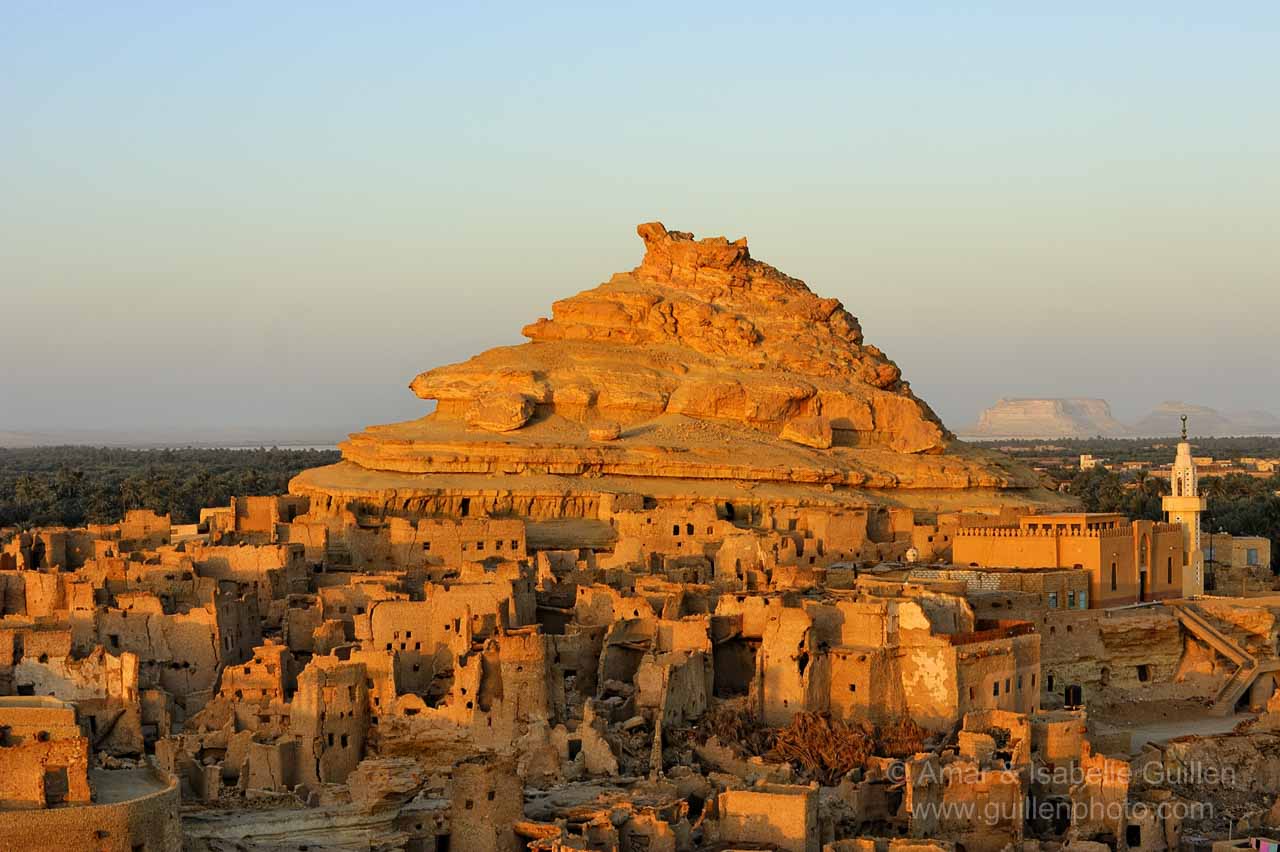Egypt
10 Places You Never Thought to Visit in Egypt

By Jailan Dahab
There are certain hidden treasures and unknown sites in the world that everyone should see at least once in their lifetime. It appears that the more one travels, the more one yearns to visit even more obscure, remote, and strange locations. Both the Pyramids of Giza and Sphinx, without a doubt, are sites that everyone should see at least once in their lifetime. However, in some cases, the more unknown a location is, the more exciting the journey will be. The following are ten places you’ve probably never considered visiting but should.
1. The Temple of Hibis
The Temple of Hibis is located in El-Kharga Oasis, and it was founded in the sixth century. The temple has been glorifying the gods and deities Mut (the mother goddess of ancient Egyptians), Amon [king of the gods], and Khonso (the god of the moon), who are coined as the Theban triad. Moreover, it mirrors the recognizable impact of political changes after the Persians and Greeks put an end to the last Pharaoh, Nectanebo II’s reign.
It is an epitome of the artistic mastery of both the ancient Egyptians and Persians. In addition, the fully decorated walls depict the classical Theban traditions. Besides the influence of the Pharaohs in construction and decoration styles, the Temple’s walls reflect the impact of the Persians as well. This can be seen in the texts and paintings portraying Darius I, a Persian king, praying like Egyptians.
2. Djara Cave
The Djara Cave or Gara Cave, which is around 30 meters wide and 8 meters high, is one of the rare, fine caves in Egypt. It has animal engravings that date back to the Neolithic period/New Stone Age. It is regarded as, following Nabta Playa, the second most significant Neolithic settlement in the Western Desert.
3. The Catacombs of Kom El-Shoqafa
The Catacombs of Kom El-Shoqafa, or the Hill of Treasure, located in Alexandria, consist of a group of underground burial chambers.They were constructed in the second century by the Ptolemaic who were influenced by ancient Egyptians and strongly believed in the afterlife. They were seen as one of the world’s seven wonders in the Middle Ages.
The necropolis, with its fascinating paintings on the walls, its tombs, and funeral objects, reflects the different styles of art, namely, the Pharaonic, Roman, and Hellenistic era. For instance, the Egyptian statutes are dressed like Romans, implying a fusion between the Egyptian and Roman styles.
4. Nelson’s Island
Nelson’s Island is located in Abu Qir, Alexandria. It was used by the Pharaohs as a necropolis in Canopus and Heracleion cities which became submerged. However, the Greek colonists settled there and established a new settlement at the end of the fourth century because of its strategic location. The discovered artifacts are dated back to the time of the Pharaohs, precisely the 26th Dynasty, and Ptolemaic.
5. Sannur Cave
Sannur Cave, which is located 70 km southeast of Beni Suef and which was formed by groundwater percolation, is classified as a Protected Area and is considered as one of the hidden gems in Egypt. The Cave is covered with alabaster and contains stalactites and stalagmites. It also has a vast number of quarries that are dated back to several eras, notably the Pharaonic era.
6. Shali Village in Siwa Oasis
Shali village, located in Siwa, Egypt, was constructed between the 12th and 13th century. It is a typical example of Siwan architecture since the village was mainly built with the Karshif or Kershef, a natural mud made of fine clay, salt, and other materials extracted from the Siwa Salt Lakes. At Shali village, you will find the world’s oldest mosque, the Old Mosque of Shali Fortress, which was completed in 1203.
Owing to heavy rains in 1926 and World War II, parts of Shali village were destroyed and eroded. In 2018, the Government of Egypt (GoE) started renovations and restoration of the Shali Fortress, in an attempt to revive the heart of Siwa’s ancient city. Two years later, the GoE opened the Shali Fortress so that everyone could visit it.
7. The Royal Jewelry Museum
The Royal Jewelry Museum, which was established in 1919 by Zaynab Fahmi, is located in Zizinya, Alexandria. This Palace, which comprises two wings that are connected by a corridor, is unique given that it is a typical example of an architectural design that merges between both Islamic and European styles. At the Royal Jewelry Museum, you will see an enormous collection of collectibles and possessions of the royal family that ruled Egypt from 1805 till 1952, including a diamond, emerald inlaid collar, a gold chessboard, and gold cups inlaid with precious stones.
8. The Colorful Valley of Taba
The Colorful Valley of Taba or the Colored Canyon/groove is seen as one of the top natural wonders in the heart of Sinai desert due to the marvelous colors and shades of its lime rocks and the metallic radiance of its walls. The Colored Canyon, which reaches 800 meters high, is located 210 miles away from Cairo. The spectacular walls of the Colorful Valley are made up of amazing rock formations that were formed by water erosion. You can enjoy hiking in the Canyon that has a width of 700 meters.
9. Cave of Swimmers (The Rock Art of Gilf Kebir)
The Cave of Swimmers at Wadi Sura in Gilf Kebir Plateau of Sahara is one of Egypt’s most intriguing rock sites since it has numerous paintings, which were created around 9000 to 6000 years BC, portraying swimming figures. The main cave was discovered in 1933. Also, the surrounding area is full of rock art sites and caves, of which the Giraffe rock was discovered in 1931. There is also another cave in the area depicting female figures and archers.
10. Gebel Elba
Gebel Elba in Halayeb Triangle, known for its biodiversity, is seen as one of the mind-blowing national parks in Egypt, where 26 mammals and a group of rare animals, such as the aardwolf, striped polecat, Egyptian leopard, barbary sheep, gazelles, ibexes, and rock hyrax, live there. The Gebel Elba national park that stretches over 50 kilometers also encompasses about 458 plant species, such as acacias and dragon trees; 104 species of fish; 86 species of corals; and 60 types of birds.
Bonus: Cairo International Airport Museum
The Cairo International Airport Museum was inaugurated in 2016, in an effort to give tourists, notably transit tourists, a glance about the history of Egypt. Numerous artifacts and antiquities, reflecting different phases and eras of the history of Egypt, are exhibited at the museum. The Cairo International Airport Museum provides an opportunity for transit tourists to explore the history of Egypt starting from the Pharaonic era, passing through the Greco-Roman, Coptic, and Islamic eras till the modern era.
